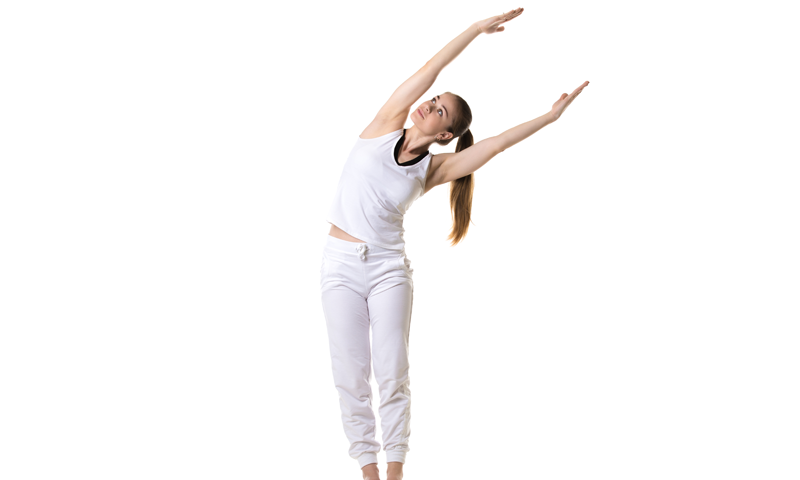
11 Dos and Don’ts of Coping with Soreness After Yoga
February 20, 2020
The Best Yoga Pose to Unleash the Power of Your Zodiac Sign
March 5, 2020Are You Moving Your Spine and Rib Cage Enough?

No matter how often you practice yoga, you probably aren’t moving your spine and rib cage enough. To experience ease both on and off the mat, put on your yoga top and incorporate the postures below into your routine.
Before we get into the postures, let’s go through a quick anatomy lesson. Yoga is a great way to decompress the spine and improve your range of movement in various directions, speeds and under different loads. This is something that we all need. To reach your full range of movement, though, you need to add other types of multidimensional movement into your routine, including side bending, spiraling the spine and rotating your spine and rib cage.
Unlike a standard twist, a two-dimensional movement that happens in one plane is a three-dimensional motion that’s repeated. You circle the spine around and lengthen it upward before letting it return to its initial length. As you do so, you promote healthy fascia in the back and shoulders, around the ribs and between your abdominal muscles.
Three-dimensional movements also de-stress the shoulders and neck. Your rib cage is the base of support for your head and shoulder girdle, and by increasing the three-dimensional expansiveness of the thorax, you expand the base. This allows your collarbones and shoulder blades to rest more easily on the ribs, decreasing the workload on the muscles and fascia. Decreasing this workload promotes a wider range of movement in your neck and shoulders.
Exercise No. 1: Side Bend
To practice Side Bend, begin in a 90/90 kneeling position so that each knee forms a 90-degree angle. Move your right foot forward so it’s in line with your right knee and rest your left knee on the floor below your left hip. Relax the top of your left foot and your left shin on the mat. Reach your arms out to the sides, holding them just below shoulder-level. Lengthen your spine by lifting up through your public bone.
As you breathe out, slowly bend your torso over your right side. Reach your left arm above your head and lift it from the left ear. By doing this, you are lengthening and strengthening the muscles that hold you in lateral flexion, including your quadratus lumborum and obliques. Across your left hip, lengthen your hip flexors. As you breathe in, take air into the left side of your rib cage to expand it.
As you breathe out, engage your lower abdominal muscles and pelvic floor, lifting your pelvis to lengthen the lower back and deepen the hip-flexor stretch. You are in Side Bend. Hold the posture for 30 seconds before repeating on the opposite side.

Exercise No. 2: Sit Back and Forward Fold
To practice Side Back and Forward Fold, begin in a kneeling position with both arms overhead. As you breathe in, move your right foot forward, letting your knee extend and your pelvis move back. Keep your spine long and centered as you fold your torso forward and lower your arms to shoulder-height. You are in Sit Back and Forward Fold. By letting your hips flex, you soften the fascia in your hip joint. As you breathe out, lift your arms overhead and move into an upright position. Repeat the exercise 5-6 times for the best results.
Exercise No. 3: Side Stretch with Spiraling
This stretch will improve the health of the fascia between your abdominal muscles, in your back and shoulders, and around your ribs. To transition into this stretch, place your left hand on a block or the floor in line with your left knee. Once firmly grounded, move your pelvis directly over your left knee and raise your right arm above your head. Your spine is now long in lateral flexion. Stay in this position for a few moments, keeping your head in line with your lengthened neck.
Next, press your left hand into the ground and stabilize your shoulder by spiraling the end of your humorous down and out. Imagine that the arm is a support pillar over which you can rest your upper body. Reach further out with your right arm to increase the stretch in your pectoralis major, latissimus dorsi, spine extensors, abdominals, and intercostals. This will also cause the muscles and fascia in the waistline and rib cage to soften.
As you breathe out, reach your right arm down to the ground. As you do, you should experience a domino-like motion where the moving of your arm facilitates the gliding of your shoulder blade along the ribs, allowing the back of your rib cage to spiral open. While your sternum rotates towards the ground, twist your pelvis up towards the sky to further open the lower back.
As you breathe in, reach your right arm above your head. Twist your spine and rib cage towards the sky, along with your arm. Allow the front of your rib cage to open. Continue to stretch out with your right hand and rotate your palm towards the sky to intensify the upper-body stretch and chest opening. Repeat this motion 3 times, slowly. Finally, move into Downward Facing Dog for a few moments. You have now practiced Side Stretch with Spiraling. When you’re ready, switch legs and repeat the exercise on the other side.
In Summary
So, are you moving your spine and rib cage enough? The simple answer is probably not. But don’t worry, with the exercises above you’ll decompress the spine, soften the fascia, and increase your range of motion. For best results, warm up your muscles before practicing. To give yourself a head start, wrap up in a cozy yoga hoodie on your way to the studio.

